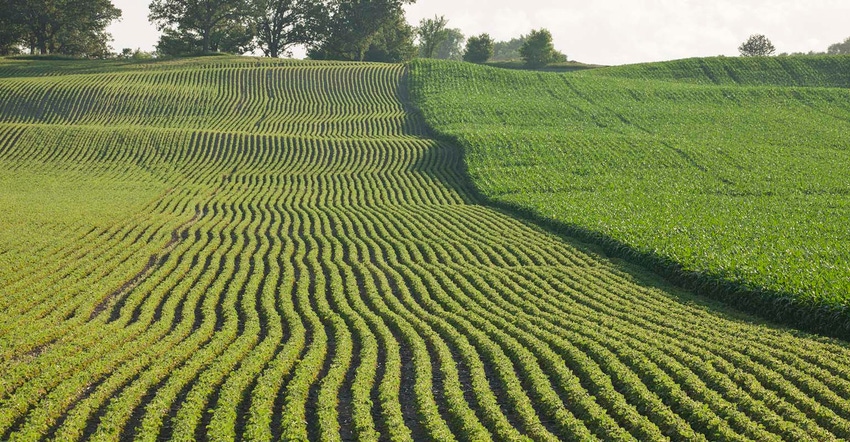
How many acres of corn and soybeans did you plant this spring? How many wound up taking prevent plant coverage? We’re asking growers about what really happened in their fields this year. Click the Feedback From The Field reporting form and give us your first-hand account on this decision along with how your crops are faring.
Use the interactive map below that’s updated frequently to see all this year’s reports just by clicking the flagged locations. Click the box in the upper left-land corner of the map to bring up an index of what the different colors of the markers signify and to toggle the week’s reports on and off.
A week of warmer weather was just what the doctor ordered for fields that were planted late and emerged slowly due to cold, damp conditions. Farmers posting Feedback from the Field last week noted improvement for both corn and soybeans, though their ratings remain significantly behind those described in USDA’s Crop Progress reports.
While a few growers said they’re still planting a few soybean acres, most of that comes from fields doubled cropped behind wheat that’s coming out slowly too.
Farms in the eastern Corn Belt and parts of the upper Midwest are facing the most stress so far, with the best conditions generally coming on the outskirts of the main production areas.
“Planted crops look OK but 90% planted in June,” said a producer from northwest Indiana who rated corn and soybeans only in “fair” or average condition using USDA’s Crop Progress definitions.
“Corn is up but 3 inches tall with pond holes in fields,” added a grower near the Illinois River in the northern part of the state who rated fields in “poor” shape. “Half of soybeans emerged but very small.”
Uneven development could make it even harder to judge conditions and ultimately estimate yields, as well as potential for frost damage this fall.
“V6 corn, V3 corn and V1 corn in the same fields,” noted a producer from western Iowa.“ Water-logged areas are still there and getting bigger with every rain.”
Several growers in the upper Midwest rated fields in “good” shape, which is above average according to USDA’s rating criteria that we show farmers in their Feedback evaluations. But even these growers are noting crops off to a slow start.
“All crops are behind in growth,” said a grower from north of the Twin Cities in Minnesota.
Normally forecasts are starting to peer into the window for corn pollination as the nation gets ready to celebrate Independence Day. Not this year in most places.
One exception has been Kentucky, where a producer was planting double crop soybeans and hoping to finish combining wheat over the weekend.
“Saw a few tassels today at home over some corn planted at the end of April,” was the report. “We have been very fortunate here.”
Follow along with the season by clicking these links:
Feedback From The Field - June 24, 2019 - Planting woes aren’t only worry for growers
Feedback From The Field - June 17, 2019 - Acres lost to corn prevent plant mount
Feedback from the Field - June 10, 2019 - Judgement time: Take prevent plant or keep going?
Feedback from the Field - June 3, 2019 - Corn planting deadlines pass as farmers ponder what to do
Feedback from the Field - May 28, 2019 - Growers make progress, but at what cost?
Feedback from the Field - May 20, 2019 - Warm, dry week gets growers in the field as crucial benchmarks arrive
Feedback from the Field - May 13, 2019 - Wet is the word for 2019.
Feedback From the Field - May 6, 2019 - Some farmers in western areas make progress but overall planting remains slow.
Feedback From the Field - April 29, 2019 - Farmers in eastern Corn Belt and upper Midwest face delays.
Feedback From the Field - April 22, 2019 - A few wheels turned but most of the Corn Belt is too wet.
About the Author(s)
You May Also Like






